If you enjoy driving and discovering crucial points of historical, cultural, and gastronomic interest, get ready for a week (at least) passing through the historic route that crosses Spain!
We are talking about the Silver Route: an 810-kilometer drive from the North to the South of the Peninsula (or vice versa), which covers seven provinces: Asturias, León, Zamora, Salamanca, Cáceres, Badajoz, and Seville.
But what is this magical route all about and where did it come from?
This route has a very long past. Behind its creation are the Tartessians, a historical civilization settled in the southwesternmost part of Spain, from the 9th to the 6th centuries BC. However, it was only after the Roman invasion in 218 A.C that this route reached its peak. The emperor Augustus wanted a road to connect Augusta Emerita (Mérida) and Asturica Augusta (Astorga) to transport goods and merchants, move military troops, and practice herding. It continued to be used for several centuries, both by Arabs and Christians.
This road was then known as Vía de la Plata, or Silver Road, but the name did not have anything to do with the metal itself. Its name actually comes from the old Arabic Al-Balat, which means “cobbled road” or “stone road”.
In the 20th century, with the development of highways, the Silver Road was modified and had its length extended to Gijón towards the north and to Seville towards the south. Since then, it has been completely transformed into the A-66 motorway.
This road trip encompasses a panoply of challenging adventures, breathtaking landscapes, and unique tastes that will heighten your five senses.
Now that you know the story behind this route, let us finally move on to the action!
The first stage of the Silver Route: Asturias (76 kilometers)
We have decided to organize this trip from the top to the bottom of the peninsula and the first thing we recommend you to do on the Vía de la Plata route is to visit the province of Asturias, to savor its rich gastronomy and fall even more in love with the ocean.
Gijón
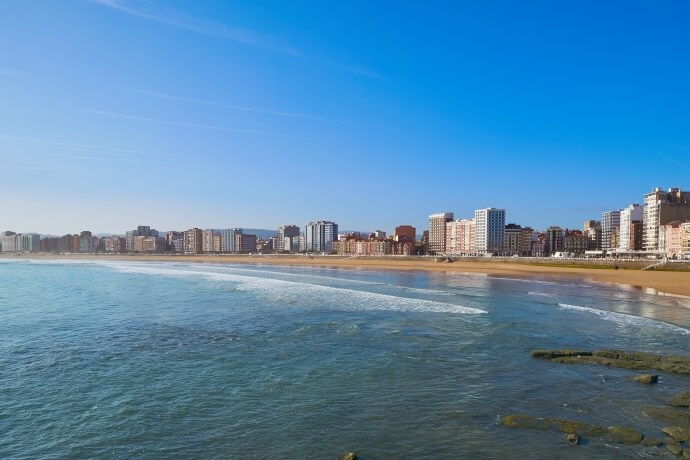
The beauty of this city is striking and allows you to delve deeper into the history of the Romans, with the Campa de Torres Archaeological Park from the 5th century BC, the Villa Romana de Veranes, or the Campo Valdés hot springs.
We also recommend the beautiful fishing neighborhood of Cimadevilla, where you can see the Revillagigedo Palace and the collegiate church of San Juan Bautista, as well as other monuments of interest.
Oviedo
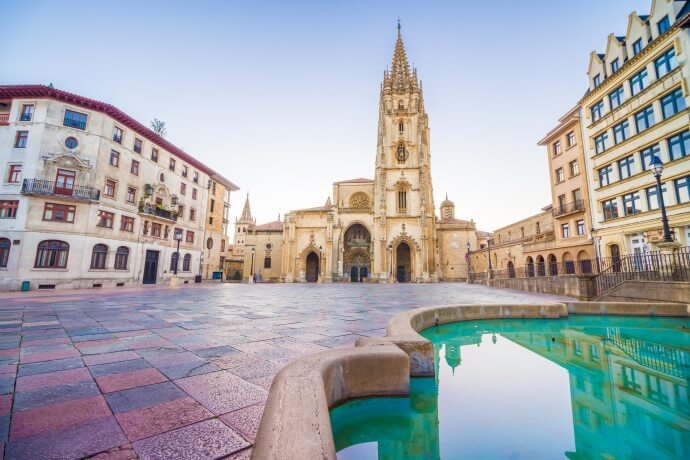
The capital of Asturias’ fame is well deserved, as it is included in UNESCO’s World Heritage list for its numerous 9th-century pre-Romanesque stone churches, which are scattered throughout the city, within the old town, and around the adjacent foothills.
But there is much more to Oviedo! The historical center exudes charm through its picturesque streets, hidden squares, and peculiar sculptures everywhere. The city uses the art of sculpture to make an homage to the Asturian culture.
When it comes to Asturian food, the people speak in unison. They believe their gastronomy is made for everyone and for all tastes. The dishes that stand out are the well-known Fabada, a rich bean stew, the sardines, the Pixín, the name of the monkfish in Asturias, and last but not least, the Cachopo, two beef fillets stuffed with ham and cheese, breaded and fried. And to drink, you must try their special cider!
The second stage of the Silver Route: Castilla y León (330 kilometers)
After crossing the Asturian borders, we enter Leonese lands and start the second stage of this adventure, which will be the longest one of the Silver Route.
Castilla y León is the largest autonomous region of Spain and it is recognized for its highly valued heritage regarding its linguistic, social, and cultural development, since many traditions and so much of the Spanish culture we know nowadays originated here.
León
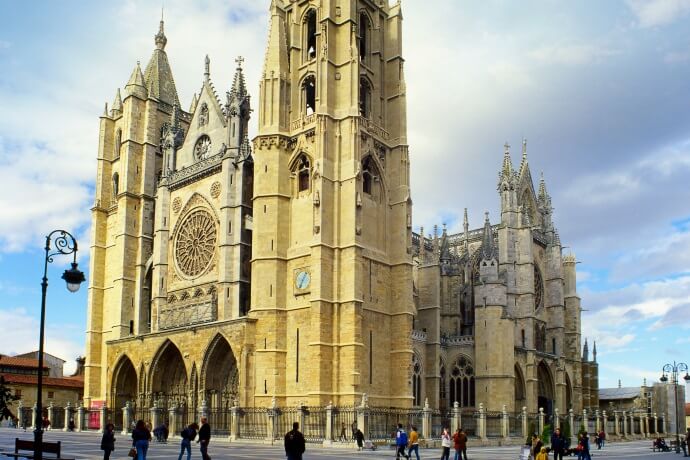
If you pay attention, you will notice how the landscape begins to change gradually. The curves become straight and all the green becomes gold and yellowish.
León holds a heavy historical power that many people are not aware of. You will be face to face with the grandiose Cathedral of Santa María de León, a masterpiece of the Gothic style, you can stroll around the Plaza Mayor and visit the Roman crypts and the old walls of the city. Wandering around aimlessly is highly recommended.
Astorga
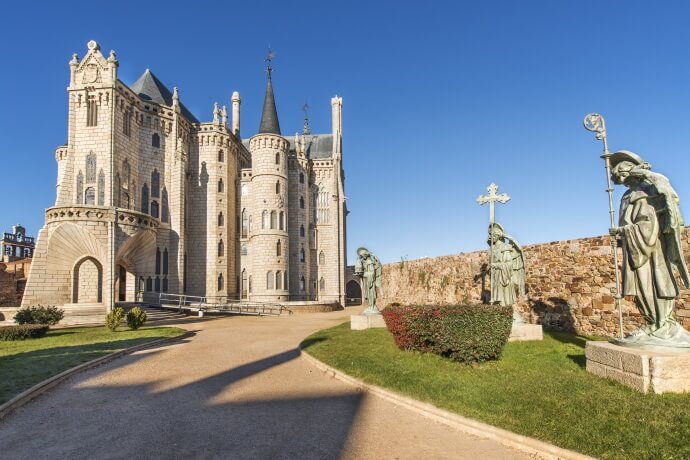
Next on your road trip is a mandatory detour to Astorga, about 45 minutes away from León, where the Ruta de la Plata originally started. Its famous Episcopal Palace of Astorga, designed by the architect Antonio Gaudí, is more than worthy of a proper visit. It was built between 1889 and 1913 and was designed in the Catalan Modernism style: It is one of only three buildings by Gaudí outside Catalonia.
Zamora
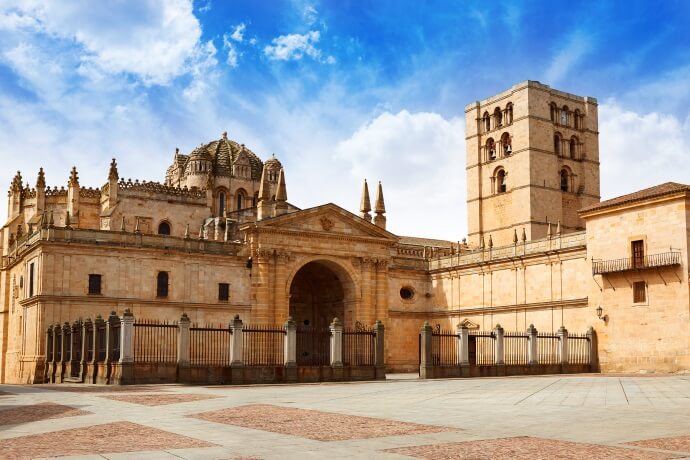
Zamora is a hidden gem that definitely deserves your attention. Its historical center dates to the 11th century and offers stunning viewpoints over the Douro River - where watching the sunset is a treat! -, and an infinity of mosaics and monuments from its Roman period. A point of interest is the Romanesque Cathedral characterized by a large dome inspired by the Byzantines, as well as several other Romanesque churches such as La Magdalena, San Cipriano, Santiago del Burgo or Santa María de la Horta.
Salamanca
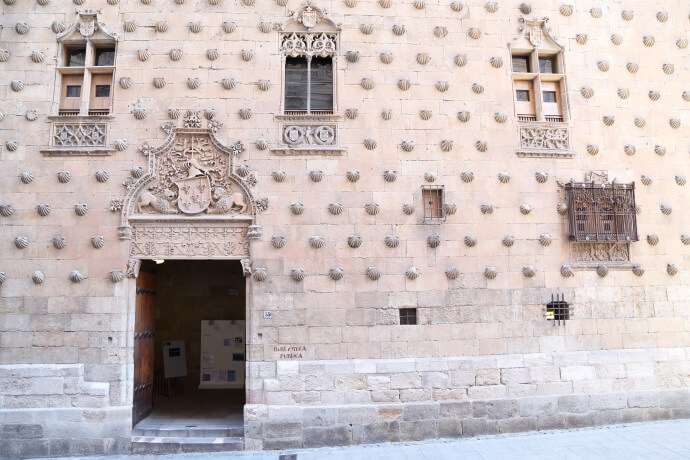
You have arrived in Salamanca! It is now time for another stroll. You will find one of the largest and best-preserved monumental legacies in Europe, with the oldest university in Spain, the cathedrals, the Plaza Mayor, and the Casa de las Conchas (the shell house). A unique fusion between ancient, bustling, and young, it is not in vain that it has been declared a World Heritage Site.
Finally, some typical food recommendations for this region of Spain. You will be halfway along the route by now, so you definitely need to recharge your batteries with a hearty dish: nothing better than a Leonese Maragato stew with its Pico Pardal chickpeas, blood sausage and vegetables and many more pig and sausage-based dishes.
As soon as you enter the city of Béjar, located about 50 minutes from Salamanca, you will notice the road becoming more thrilling, nestled in an area with more vegetation and with ups, downs, and curves. But the challenging road ahead will be worth it because Béjar is highly nature-oriented, with the mountains of the Sierra de Francia and the Peña de Francia boasting 1,700-metre-high views.
The third stage of the Silver Route: Extremadura (300 kilometers)
Extremadura is known for displaying breathtaking natural beauty and well-preserved monuments and archaeological sites as old as the Romans and the Moors. We can never forget to mention the amazing wines this region both produces and serves.
Cáceres
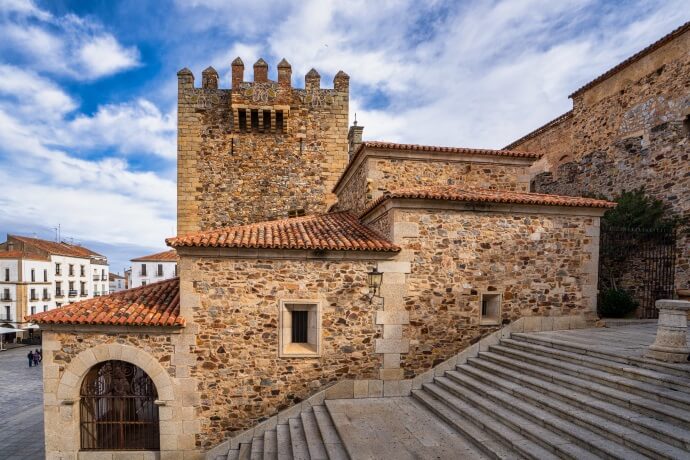
Different peoples have left traces of their passage through Cáceres over the years and it is very visibly one of the most emblematic and quaint cities in Spain. Its architecture boasts a fusion of Roman, Moorish, Northern Gothic, and Italian Renaissance monuments, therefore it was evidently declared a World Heritage City by UNESCO in 1986. Thirty towers from the Islamic period still stand in Cáceres, of which the Torre del Bujaco is the most famous. As if this wasn’t already impressive, do not leave behind the historic center nor the neighborhood of San Antonio, the old Jewish quarter created in the 14th century, famous for its narrow streets, whitewashed houses, and flower-filled balconies. There you will find the controversial hermitage of San Antonio, built on an old Jewish synagogue.
Mérida
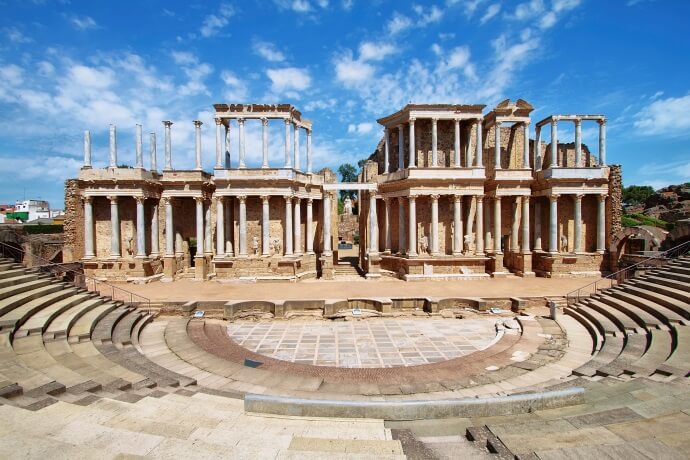
Mérida has always been the epicenter of the Silver Route, the former Emerita Augusta, and the Roman presence and history are still tangible, with monuments scattered in every corner, such as the Temple of Diana, the Roman theatre and amphitheater, the aqueduct, the Arch of Trajan and the National Museum of Roman Art. Do not worry, there are more!
But to our surprise, we can find not only Roman history, but also Visigoth, Arab, medieval, and current history, all coexisting in one place.
If you are a hidden gem lover, we recommend a stop or even spending a night in Trujillo, Plasencia and Zafra, to get lost in the medieval ages and enjoy their monuments and magnificent views, in order to really absorb their essence.
In Extremadura lands, sausages, and meat rule (what a surprise!). But the dish you must try, sí o sí, is the Migas extremeñas, made with bread, bacon, garlic, paprika from La Vera, chorizo peppers, and a fried egg. You can thank us later!
The fourth and last stage of the Silver Route: Andalusia (115 kilometers)
Even though this is the last stage of this adventure, the good news is: you are reaching Seville!
Seville is the capital of Andalusia, the second-largest autonomous region in Spain, and the most populous one. Its current name comes from the old Arabic Al-Andalus, which is believed to mean Paradise. You can expect to be overwhelmingly impressed with the Muslim history and architecture present here.
Seville
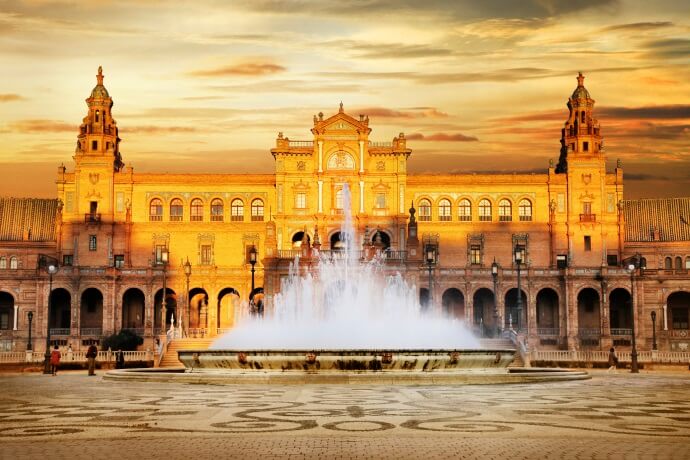
One of the most emblematic and popular Spanish cities. The Cathedral (the largest gothic building in the world), the Giralda, the Real Alcázar, and the Archive of the Indies have earned it the declaration of a World Heritage Site by UNESCO.
We highly recommend you stay at least two nights, getting to know every corner of this magical and lively city, beyond its grandiose monuments. The former Jewish quarter of Santa Cruz is a great starting point, followed by the Plaza de España, the María Luisa Park to take a break, the Triana narrow streets on the opposite side of the Guadalquivir River, and of course, a Flamenco show. The options are endless!
Eating in Seville is quite the gastronomic experience! You will find an authentic tapas bar very easily to indulge in the flavors of this land. Some of the specialties are the gazpacho (the cold soup of Spanish cuisine), flamenco eggs (eggs served with fried potatoes, chorizo, and ham), stew croquettes or one of the Andalusian classics, fried fish, known as pescaíto frito. The Triana neighborhood is an ideal place to sit on a terrace and order something new to try accompanied by a glass of wine. And make a toast to life!
Ready to explore Ruta de la Plata?
What once was an ancient Roman road has now become a trip to the past through the history and the culture still so present in the places it passes by, which allows you to live new experiences that you will hold fondly forever in your memories.



